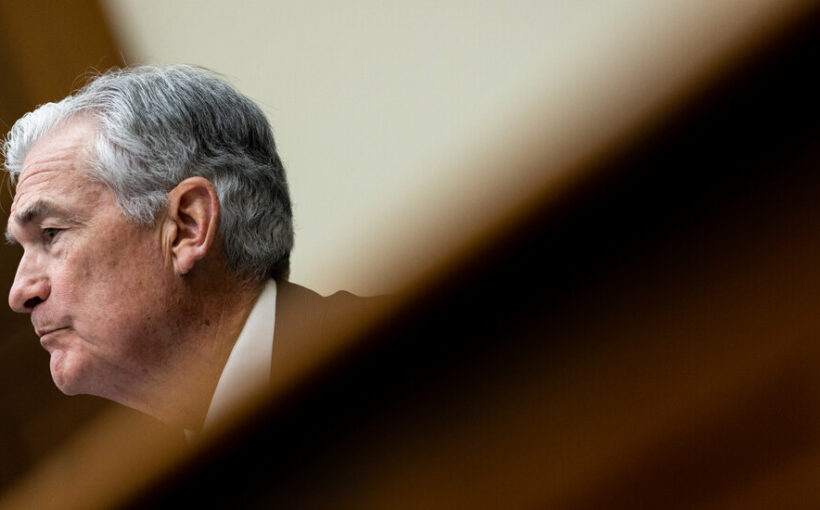Federal Reserve officials received a complicated signal from February’s employment report, which showed that job growth retained substantial momentum nearly a year into the central bank’s campaign to slow the economy and cool rapid inflation. But it also included details hinting that the softening the Fed has been trying to achieve may be coming.
Policymakers have raised interest rates from near zero to above 4.5 percent over the past year, and Jerome H. Powell, the Fed chair, signaled this week that the size of its March 22 rate move will hinge on the strength of incoming data — making Friday’s employment report a critical focal point for investors.
But the figures painted a complicated picture. Employers added 311,000 workers last month, which was more than the 225,000 expected and a sign that the pace of hiring has cooled little, if at all, over the past year. At the same time, wage growth moderated to its slowest monthly pace since February 2022 and the unemployment rate ticked up slightly.
“It’s exactly what I wasn’t hoping for, which is a mixed report,” said Michael Feroli, chief U.S. economist at J.P. Morgan.
That makes determining the Fed’s next steps more challenging.
Officials raised rates in large three-quarter-point increments four times in 2022, making borrowing sharply more expensive in hopes of restraining a hot economy. But they had been slowing the pace of adjustment for months, stepping down to half a point in December and a quarter point in February. Policymakers thought they had reached the point where interest rates were high enough to significantly cool the economy, so they had expected to soon stop raising rates and simply hold them at a high level for a while.
Inflation F.A.Q.
What is inflation? Inflation is a loss of purchasing power over time, meaning your dollar will not go as far tomorrow as it did today. It is typically expressed as the annual change in prices for everyday goods and services such as food, furniture, apparel, transportation and toys.
What causes inflation? It can be the result of rising consumer demand. But inflation can also rise and fall based on developments that have little to do with economic conditions, such as limited oil production and supply chain problems.
Is inflation bad? It depends on the circumstances. Fast price increases spell trouble, but moderate price gains can lead to higher wages and job growth.
How does inflation affect the poor? Inflation can be especially hard to shoulder for poor households because they spend a bigger chunk of their budgets on necessities like food, housing and gas.
Can inflation affect the stock market? Rapid inflation typically spells trouble for stocks. Financial assets in general have historically fared badly during inflation booms, while tangible assets like houses have held their value better.
But data from early 2023 have surprised the central bank. The labor market, inflation and consumer spending all showed unexpected signs of strength, which made policymakers question whether they might need to raise rates by more — or even return to a faster pace of adjustment. That’s why central bankers have been looking to incoming data from February for a sense of whether the robust January figures were a one-off or a genuine sign of strength.
“If the totality of the data were to indicate that faster tightening is warranted, we would be prepared to increase the pace of rate hikes,” Mr. Powell told lawmakers this week, emphasizing that “no decision has been made on this.”
Friday’s figures suggested that hiring is genuinely resilient: Employers added more than half a million workers in the first month of the year, even after revisions.
But the slowdown in wage growth could be good news for the central bank. Officials have been nervously eyeing rapid wage gains, fretting that it will be difficult for inflation to cool at a moment when employers are paying more and trying to make up for those climbing labor bills by passing the costs along to consumers.
The State of Jobs in the United States
The labor market continues to display strength, as the Federal Reserve tries to engineer a slowdown and tame inflation.
That said, a closely-watched measure of wages for production workers who are not managers — rank-and-file employees, basically — held up. Wage data bounce around, and economists often watch that measure for a clearer reading of underlying momentum in pay gains.
Priya Misra, head of global rates strategy at TD Securities, said she thinks the report makes the size of the Fed’s next rate move a “toss up.” The pace of hiring is likely to suggest to officials that the labor market is still hot, but the other details could give them some room to watch and wait.
“It’s not an obvious slam-dunk for 50,” Ms. Misra said, referring to a half point move.
The upshot, she said, is that investors will need to closely watch in the Consumer Price Index report that is scheduled for release on Tuesday. The fresh figures will show how hot inflation was running in February, giving central bankers a final critical reading on where the American economy stands heading into their decision.
“It makes this the most important C.P.I. report — again,” Ms. Misra said.
Economists in a Bloomberg survey expect monthly inflation readings — which give a clearer sense of iterative progress on cooling price increases — to slow on an overall basis, but to hold steady at 0.4 percent after stripping out volatile food and fuel prices.
One challenge is that the numbers will come out during the Fed’s pre-meeting quiet period, which is in place all of next week, which means that central bankers will not be able to tell the world how they are interpreting the new data.
Source: Read Full Article
